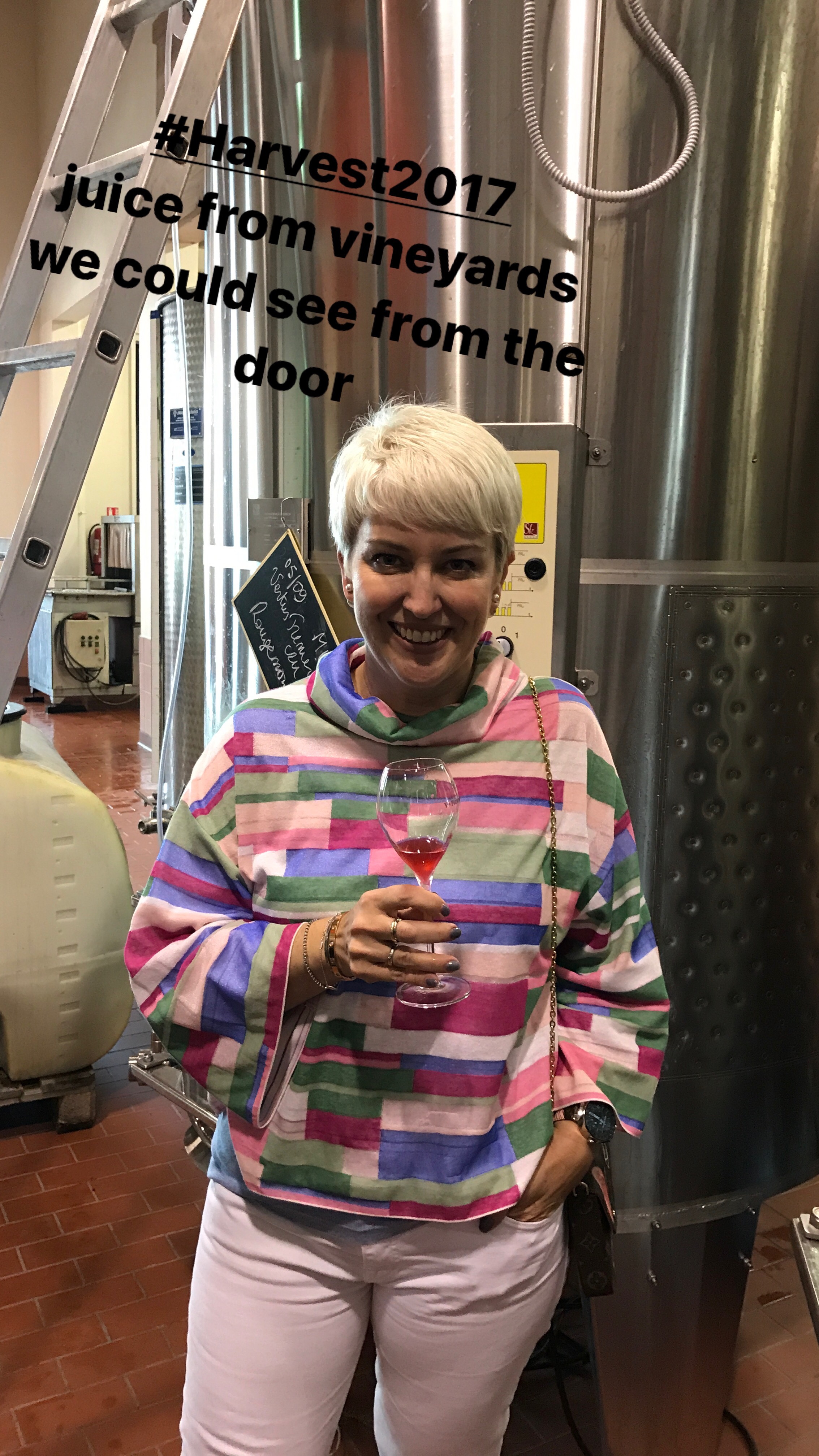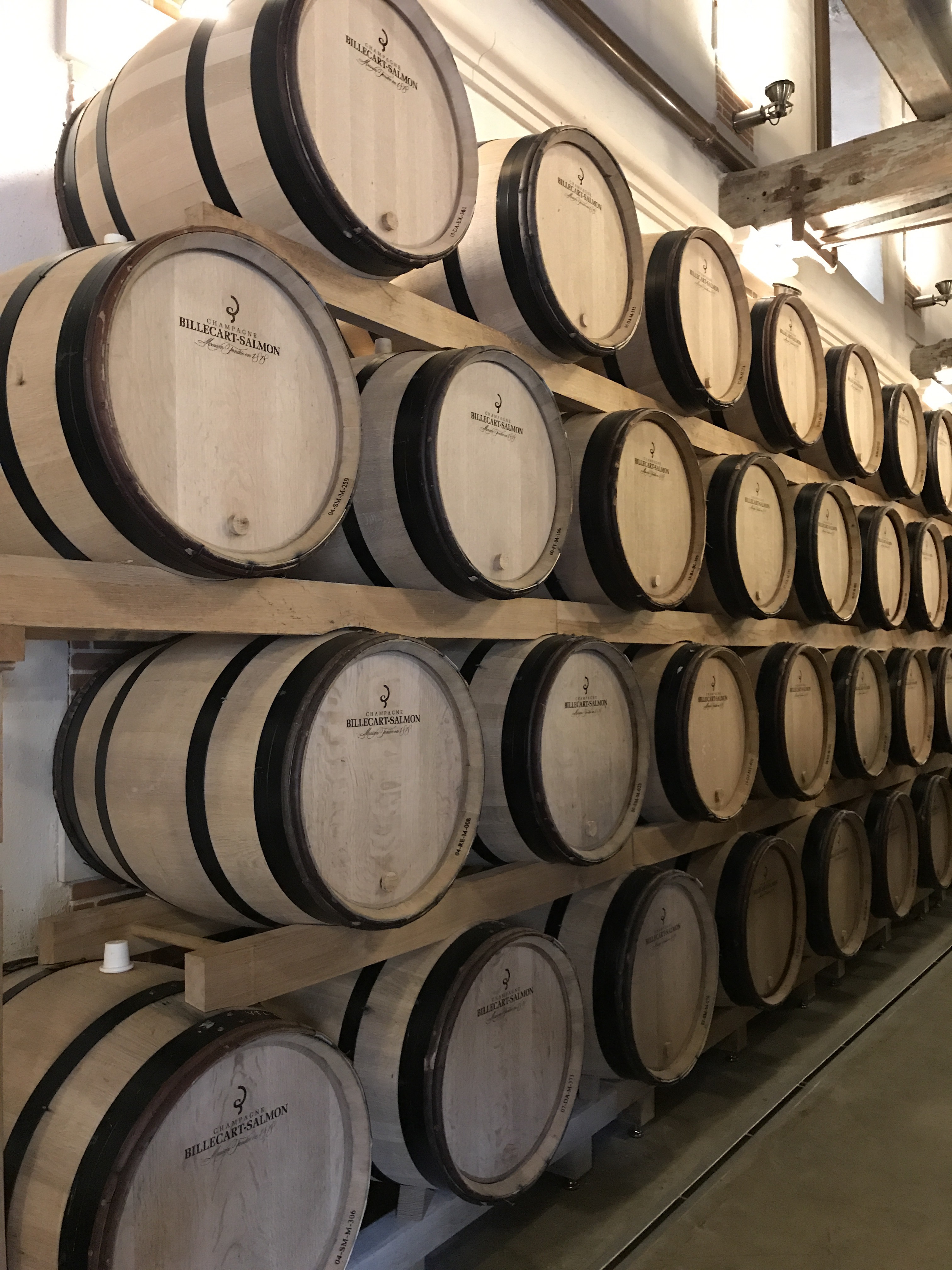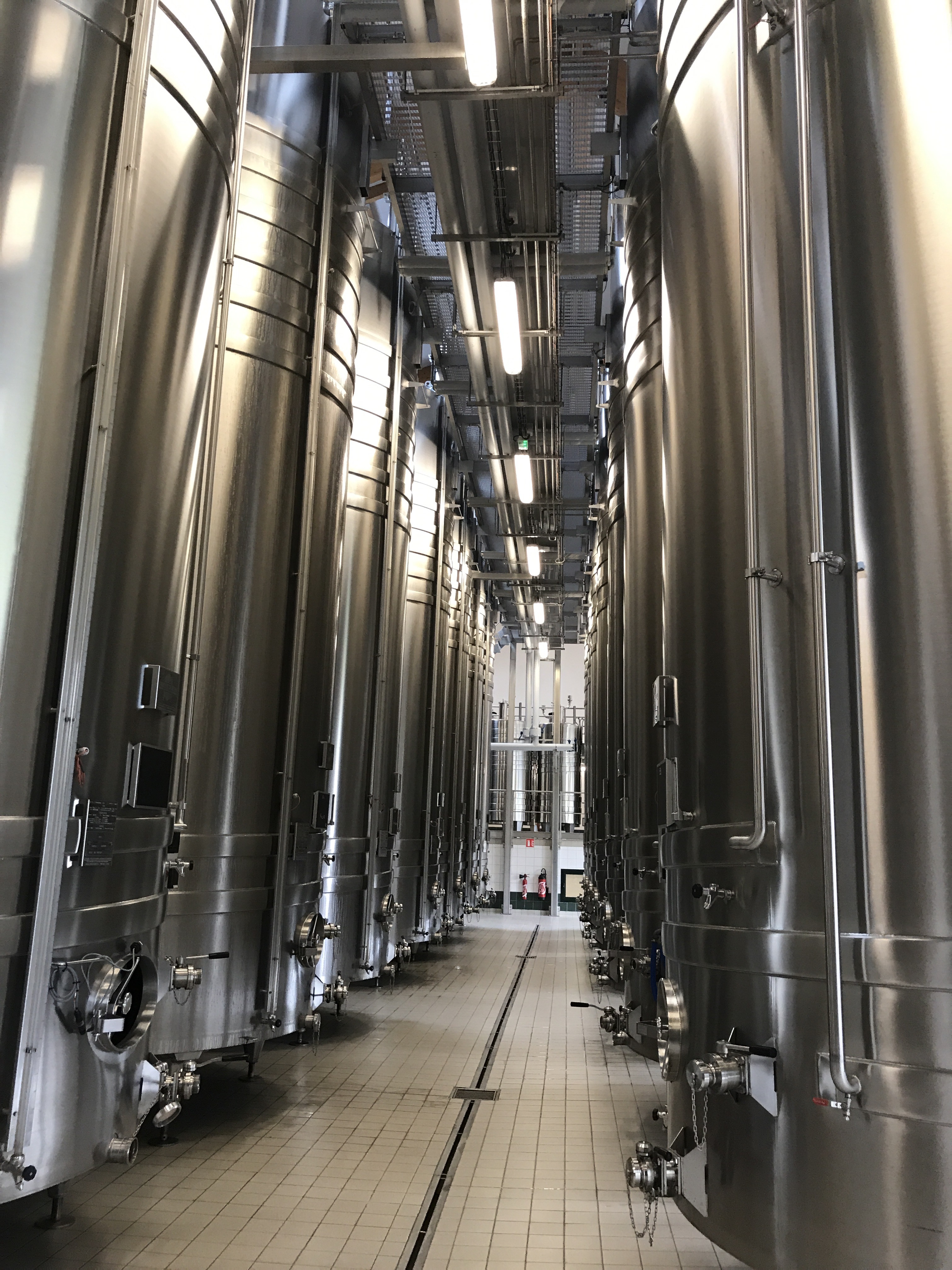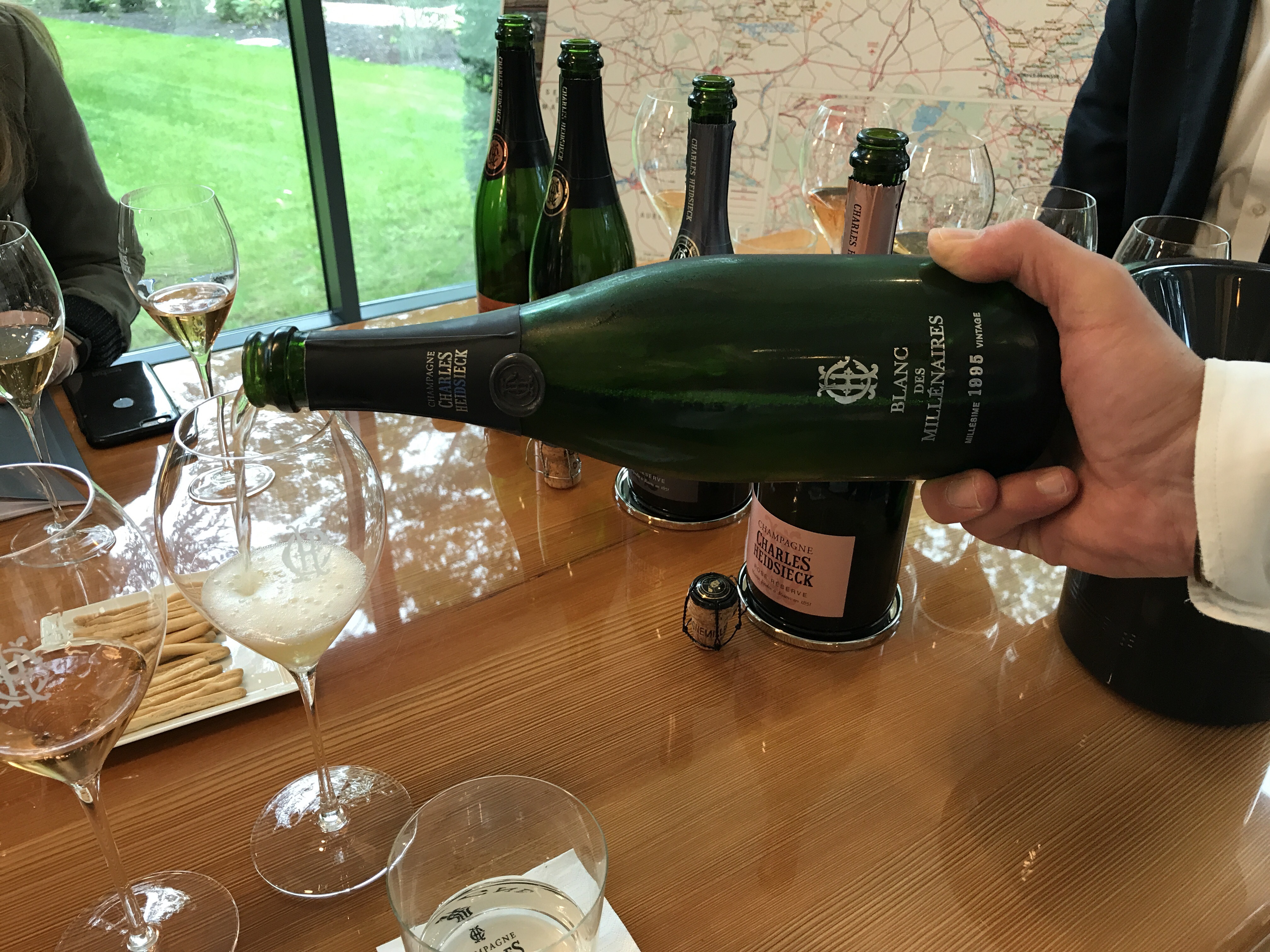Stuart and I have just spent the past week in Champagne, visiting a whole range of different houses and having the great fortune of seeing a visit planned 18 months ago coincide with the week of harvest.

This meant that our hosts for the week were incredibly busy, and we are so appreciative that without exception they made time to welcome us and share their knowledge with us at such a critical time in their annual business cycles. It was a reflection of the enormous level of esteem with which they hold Tyson Stelzer, our friend and the choreographer of this experience.
The actual harvest occurs in a way that has barely changed for centuries. The fragility of the grape skins means they still have to be picked by hand, and rapidly transported to a press house close by for extraction of the juice.

We saw presses that ranged from the very traditional barrel style to the ultra modern, and over the week the scent changed from the freshness of the initial press to the heady fumes of the first fermentation.
Charles Fourny of Veuve Fourny et Fils, gave us the unique opportunity of sampling juice straight from the press, juice that had been through its first fermentation, and then the wines at various degrees of age. It was a fantastic way of experiencing the unique qualities that literally each individual plot of grapes brings to the ultimate finished product.

The terroir, or the quality of the soil and the position of the plot, is the differentiator of champagne grapes. The same grape variety can be grown on two plots a couple of hundred metres apart, with a huge difference in the taste and quality of the grapes produced. Position on the slope or the flat, orientation to the sun, and the level of chalk in the soil all contribute to delivering products that even a pretty uneducated palate like mine has no problem in distinguishing as completely different.

The different styles of champagne are driven by the processes from pressing and beyond. Whether the product only includes juice from the first press, or also includes juice from a second and third press, the temperature that the fermentation is conducted at, whether or not the wine is stored in oak or stainless steel and how long for all have a role to play in delivering the final product.


It was fascinating over the week to see how the different processes contributed to the end taste, and by midway through the week I was beginning to be able to predict whether the final product would appeal to me or not by virtue of the production style used to make it.
I’d always had the perception that the real hallmark of a champagne house lay in its ability to produce great vintage products, but discovered that the reality is actually quite different. The real challenge and skill lies in the production of the non vintage champagne, where a consistent product needs to be created from hugely variable starting products. Each year’s harvest delivers an incredibly different product, even from grapes picked from the same plots. The level of rain and amount of sun experienced during the growth of the grapes, the prevailing temperature of the season, and a myriad of other factors all play a huge role in determining the quality and style of the juice delivered, which in turn impacts on the wine which is able to be produced.
The chef du cave must take into account this variability and create a blend using both the new product and that of past harvests, where the vats or barrels of reserve wines contribute to the mix. With champagne taking years to develop into the final product released to market this requires a huge element of being able to predict not only how the components will mix together at the time, but to anticipate how they will age both singularly and together.

The analogy that made this process clear for me was one that suggested that the creation of non vintage champagne requires the skill of a master forger, where the original work is replicated in as authentic as possible a way, but that the creation of a vintage is where the opportunity for unique artistic expression lies. The skill of a great chef du cave lies in their ability to deliver both styles of art.
A truly fascinating week and one that has resulted in a greater level of appreciation of what lies behind a product that I have long had a fondness for.
As mentioned earlier Tyson Stelzer, a friend from Brisbane and globally renowned wine and champagne expert, was responsible for putting the experience together and we couldn’t recommend it more highly. As always with anything I write, this isn’t a sponsored post and we paid in full for the experience. Tyson runs these trips annually, and if I’ve piqued your interest you can find out more here.
